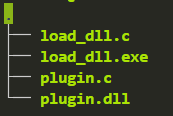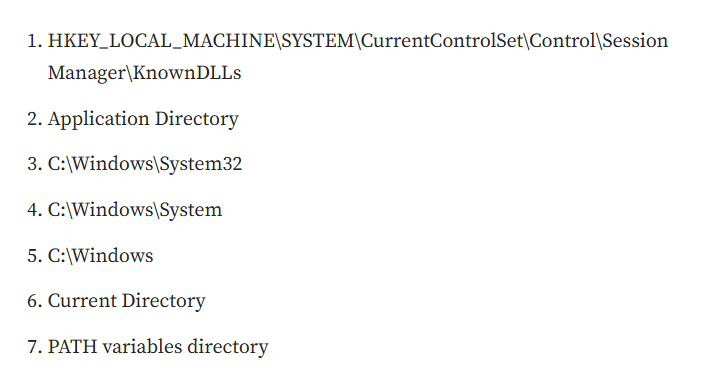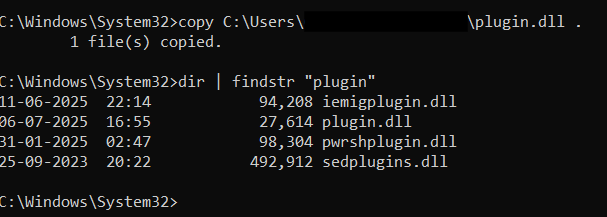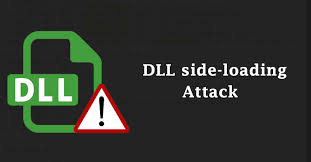Dll sideloading
DLL Sideloading is a technique that enables the attacker to execute custom malicious code from within legitimate or maybe even signed windows binaries/processes.
What is DLL Sideloading?
DLL side-loading is a popular technique used by threat actors to circumvent security solutions and trick the Windows Operating system into executing malicious code on the target endpoint.
What is this DLL?
A DLL (Dynamic Link Library) is like a toolbox for programs. It holds shared tools (code) that many apps can use without copying everything. It helps apps run smoother and save space. Think of it as a recipe book all your programs borrow from instead of rewriting the same recipe!
Understand through example
Let’s create a sample binary and see how exe or any program and dll works together. First we’ll create main exe file using this C code. Which will load a dll file.
1
2
3
4
5
6
7
8
9
10
11
12
13
14
15
16
17
18
19
20
21
22
23
24
25
#include <windows.h>
#include <stdio.h>
typedef void (*RUNFUNC)();
int main()
{
HMODULE hLib = LoadLibrary("plugin.dll");
if (hLib == NULL)
{
printf("Failed to load plugin.dll\n");
return 1;
}
RUNFUNC runme = (RUNFUNC)GetProcAddress(hLib, "runme");
if (!runme)
{
printf("Function not found in DLL\n");
return 1;
}
runme();
FreeLibrary(hLib);
return 0;
}
This program loads a DLL file called plugin.dll at runtime. It then looks for a function named runme inside that DLL. If found, it calls that function. After running, it unloads the DLL. It’s like loading a plugin, using one of its features, then cleaning up. Complie this code using this command:
1
gcc load_dll.c -o load_dll.exe
This will create load_dll.exe file. Now if you run this code execution will fail because plugin.dll is not present. 
Now we create plugin.dll using this code:
1
2
3
4
5
6
7
#include <windows.h>
#include <stdio.h>
__declspec(dllexport) void runme()
{
MessageBox(0, "Hello from plugin!", "DLL Called", MB_OK);
}
Complie this code this this command:
1
gcc -shared -o plugin.dll plugin.c
This will create plugin.dll and your directory will look like this:

Now again run this code and see if that loads the dll or not. 
Boom!! It worked as it should be.
Understanding the DLL Search Order
Wait then where is DLL-Sideloading?? This is the normal behaviour. We are comming to that only before that we need to understand what happens when dll is not present in the same directory? A quick google search for dll search order Read here

These are the locations where it will search the dll and if not found the execution will fail.
So if we place our plugin.dll in C:\Windows\System32 Folder will it load? Let’s see that 
Now we run our program again and see if it loads that dll or not? 
But wait it should load that dll right? The dll file is present in System32 Folder what just happend.
The “Why the F isn’t loading?!” Phase
Let’s open procmon to see where it searches for dll. Add these filters to shorten your search: 
And then run your exe again to load the results in procmon. 
There are many more but here’s the shorter version of my procmon process where it did not try to search plugin.dll in System32 folder instead it did search in SysWOW64. The reason is simple the architecture issue.
System32actually holds 64-bit DLLs on 64-bit Windows.- If you run a 32-bit EXE, it is redirected by WoW64 to:
C:\Windows\SysWOW64
Check architecture using file command
If you have wsl installed using this command in this folder C:\Windows\System32
1
file plugin.dll
Output:
1
/mnt/c/Windows/System32/plugin.dll: PE32 executable (DLL) (console) Intel 80386, for MS Windows, 14 sections
Final Win
Now we know it’s a 32 bit exe that’s why it is getting redirected to SysWOW64 move your plugin.dll in that folder and run it again. And Boom!! it worked 
Ofcourse you can place this file in any other folder also but understanding why it doesn’t work in that folder only is also important.
Key Lesseons
This shows how programs load DLLs dynamically. If a program looks for a missing DLL, you can drop a malicious one with the same name in the right spot — a common trick in DLL hijacking to evade detection and gain control.
- Don’t ignore architecture
- Procmon is your best friend
- PATH search comes last
Thank you for reading!! ;)


